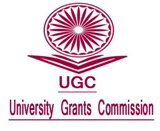Socio-Economic Prospects and Major Constraints of Vannamei Shrimp Farming in Kerala
DOI:
https://doi.org/10.26725/JEE.2022.1.34.6750-6758Keywords:
Vannamei shrimp farming; prospects; shrimp farmers; constraints; Kerala.Abstract
Shrimp farming plays a pivotal role in the socio-economic development of the coastal population of India by way of contributing to foreign exchange earnings and livelihood options. In the current study, the culture technique and stocking density are taken into account for investigating the influence of these factors on the production performance and economic feasibility of vannamei shrimp farming in Kerala. Along with the major constraints faced by the Kerala vannamei farmers also undergoing investigation. In recent years, vannamei shrimp farming has been getting excellent responses from shrimp farmers around Kerala due to the attractive and profitable rewards of shrimp farming. Kodungalloor from Thrissur District is a key area in Vannamei shrimp farming in Kerala, more than 60 shrimp farmers are doing Vannamei shrimp farming very enthusiastically and efficiently. But Kerala State still depends on other States to cater to the processing industry which is a highly labour-intensive sector providing the major avocation to thousands of families. Continuous unfavourable weather conditions and delay in the farm registration process led to non-adoption of vannamei shrimp farming in Kerala. Though the State Government support the vannamei shrimp farmers by notifying shrimp farming as an essential activity, our study showed that additional efforts and supports are required to implement solid plans at the ground level.References
Balakrishnan, G. P, Soundarapandian, K, Ramachandran, A, Theivasigamani, K.A, Savji,M.Chokkaiah, & Nataraj, P. (2011). Growth of Cultured White Leg Shrimp Litopenaeus vannamei (Boone 1931) In Different Stocking Density. Advances in Applied Science Research,2(3): 107-113.
CAA, (2010). Compendium on introduction and farming of SPF Litopenaeus vannamei in India. Paul Raj, R, Chandrapal, G. D, Manimaran, B, Sinha, M. K, Vincent, D., Priya, G, & Ramesh Kumar, S. (Eds.), Coastal aquaculture authority of India, Chennai, India, 35 pp.
FAO, (2020). The State of World Fisheries and Aquaculture 2020. Sustainability in action. Rome. https://doi.org/10.4060/ca9229en.
Garret, H.E & Woodworth, R.S. (1969). Statistics in Psychology and Education. Vakils, Feffer and Simons Pvt. Ltd, Bombay, pp. 329.
Garza de Yta, A, Rouse, D. B & Davis, A.D. (2004). Influence of Nursery Period on the Growth and Survival of Litopenaeus vannamei Under Pond Production Conditions. Journal of the World Aquaculture Society 35: 357–365.
Kumar, B, Sharma, R, Lakra, Sharma, A, Prakesh, S, & Sharma, M.M. (2016). Economic assessment of shrimp farming (Litopenaeus vannamei) in Gujarat- A profitable venture. International journal of innovative research science. 5(8), 15334-15342.
Srinivas, D, & Venkatrayalu, Ch. (2016). Studies on present problems and prospects on shrimp farming in west Godavari districts of Andra Pradesh, India. Advances in Applied Science Reseasrch, 7(2), 49-54.
Valderrama, D, & Engle, C.R. (2002). Economics of shrimp farming in Honduras. Journal of the World Aquaculture Society, 33: 398-409. DOI:1111/j.1749-7345.2002.TB00019.X.
Wurmann, C. G, Madrid, R. M & Brugger, A. M. (2004). Shrimp farming in Latin America: current status, opportunities, challenges and strategies for sustainable development. Aquaculture Economics Management, 8:117-141.
Downloads
Published
How to Cite
Issue
Section
License
Copyright (c) 2022 https://creativecommons.org/licenses/by-nc-sa/4.0/

This work is licensed under a Creative Commons Attribution-NonCommercial-ShareAlike 4.0 International License.
Authors who publish with JEE agree to the following terms:
- Authors retain copyright and grant JEE right of first publication with the work simultaneously licensed under a Creative Commons Attribution License that allows others to share the work with an acknowledgement of the work's authorship and initial publication in this journal.
- Authors are able to enter into separate, additional contractual arrangements for the non-exclusive distribution of the journal's published version of the work (e.g., post it to an institutional repository or publish it in a book), with an acknowledgement of its initial publication in this journal.
- Authors are permitted and encouraged to post their work online (e.g., in institutional repositories or on their website) prior to and during the submission process, as it can lead to productive exchanges, as well as earlier and greater citation of published work (See The Effect of Open Access).
Extension Education Society
https://creativecommons.org/licenses/by-nc-sa/4.0/
This work is licensed under a Creative Commons Attribution-NonCommercial-ShareAlike 4.0 International License.













.png)

